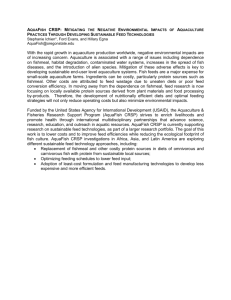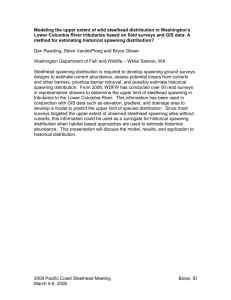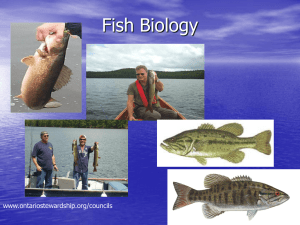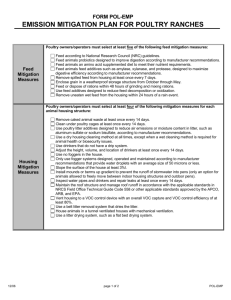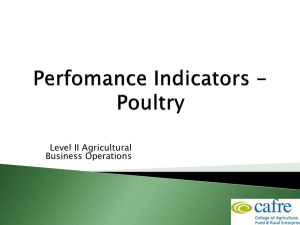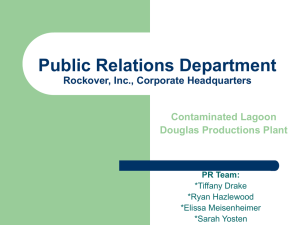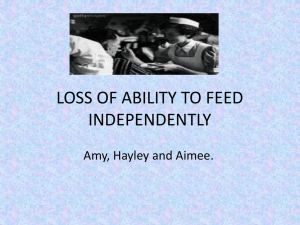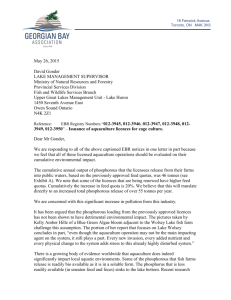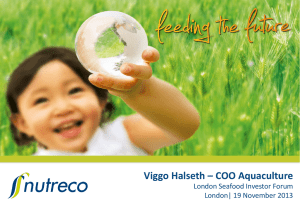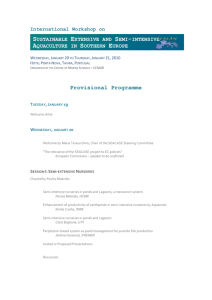Sea Bass Aquaculture
advertisement
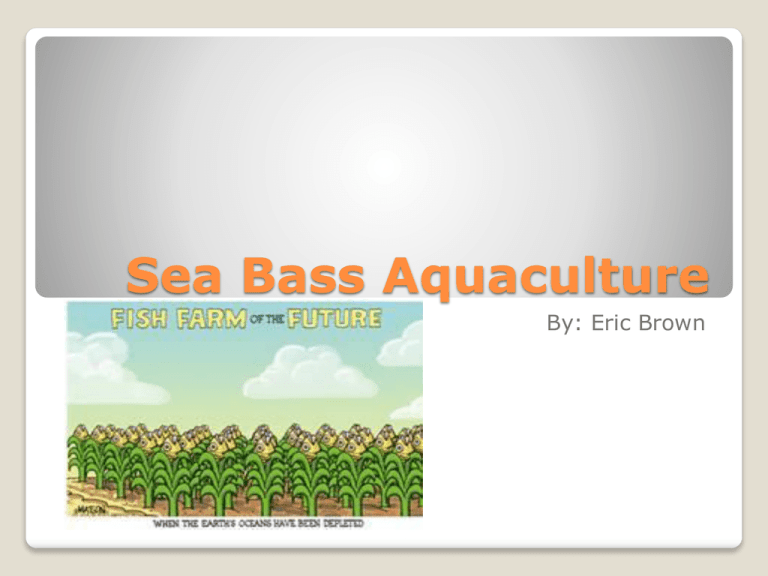
Sea Bass Aquaculture By: Eric Brown What species are used? European seabass (Dicentrarchus labrax) Sometimes marketed as Mediterranean Sea Bass. Black Sea Bass (Centropristis striata) Spotted Sea Bass (Lateolabrax japonicus) Reproduction Seabass Life Cycle • Spawn in groups •External fertilization •Eggs pelagic •2-4 year Sexual maturity •Longer in Atlantic Ocean •Spawn once a year •Embryos develop in 3 days •Larval development occurs in about 40 days •Protandrous except for European (dioecious) Reproduction in Captivity Feeding Open Water Eggs feed on yolk Juveniles feed on Zoobenthos (worms, crustaceans, polycheates Adults – neckton (finfish & bony fish) Aquaculture •Larva – only feed on small live food (Enriched Rotifers and artemia) •Adults – pellet feed (55% protein, 10% lipid) •FCR – 1.7:1 Production methods used Cages (new) Lagoon Systems ◦ Intensive ◦ Semi-intensive Hatcheries ◦ Broodstock ◦ Spawning Lagoon Systems Semi-Intensive ◦ Fisherman collect fry from coastal waters MayJune ◦ Transport with oxygenated tanks to special ponds Extensive ◦ February - May ◦ Barriers – reeds,nets, cement ◦ Nomally polycultured with seabream, mullets, and eels Hatcheries Broodstock ◦ ◦ ◦ ◦ ◦ Breeders of different ages are maintained here Parent can be farm raised or wild Females 5-8years, Males 2-4 years Induce ovulation by hormone treatments Fertilization in spawning tanks and incubation in open water Spawning ◦ Move selected breeders to spawning tanks ◦ Male:Female – 2:1 ◦ Only Females with oocytes in the late-vitellogenic stage (diameter larger than 650 micrometers) selected Cages Made of steel 4-10m² Nets suspended 68m deep Some anchored on land others in open waters Frequent net changes (15-20 days) Weekly cleaning to remove foul organisms Done by divers Water Quality pH – between 6-8 Temperature – 2022 degrees Celsius Salinity – 27- 29 g/L DO – 7.5 ppm High rates of algae Economic Importance Overfishing is a large concern and aquaculture of this species has been deemed sustainable Market price in U.S. $6.99 lb Annual Production 60,000 tons Turkey, Croatia, Spain, Italy, Greece Advantages Disadvantages Very hardy fish Cutting back on Overfishing Easily marketed Could be inexpensive if lagoon aquacultured Long to mature Very competitive market Low filet yield Carnivorous No synthetic larval feed

